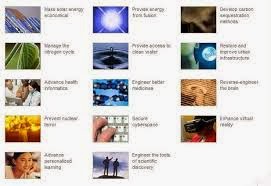 |
| NASA photo |
Since the spacecraft is now getting close enough to start sending back first-ever photos of the planet and surrounding planetary bodies, this will be a fascinating topic for my engineering students this coming semester (my spring semester is from February to June). There are so many interesting aspects of New Horizons - relating to both the spacecraft and the mission itself - that teachers of ESP will certainly find something for their students.
The Time magazine website has an article written by Alan Stern, the American planetary scientist who is the principal investigator of the New Horizons mission. This article is not only a clear and concise introduction to the topic, but also has a lot of useful language for the ESP classroom.
Link to the article: http://time.com/3645704/pluto-new-horizons-spacecraft/
The article has vocabulary relevant to distance, time, amount, speed and, of course, items in the semantic field of "space exploration." There are also useful vocabulary items of comparisons and superlatives. For example:
- too little is known
- very much the Everest of planetary exploration
- becoming the fastest spacecraft
- about 10 times more quickly than the Apollo spacecraft
- the equivalent to L.A. to New York in four minutes
- ventured farther ... to reach
- At its closest approach
- still both the brightest and largest one known
- the largest mapped structure
- three times as big
For a fairly short article, there are quite a few tenses used:
- present simple
- present perfect
- past simple
- past progressive
- future with will
- future with going to
The sentences with the past simple tense and the present perfect tense are good examples of the differences between the use of these two tenses - something my students find difficult to understand.
past simple tense:
- The last time a spacecraft reached a new planet was during ... back in 1989.
- New Horizons already set records when it was launched in 2006 ...
- In 2003, the National Academy of Sciences ranked visiting the Pluto system ...
- Because in the 1990s, planetary astronomers discovered a vast structure ...
- I have had the privilege of leading ... since its inception 14 years ago ...
- No spacecraft has ever ventured farther ...
- Nothing like (it) has happened in a generation ...
In the article, Alan Stern mentions the questions about Pluto that the mission is expected to answer. These are not only useful for follow-up research work for students, but are also good examples of the variety of question forms in English:
- Does it have mountain ranges?
- Is its surface young or old?
- Are there polar ice caps?
- Might there be liquids on its surface or oceans in its interior?
- Could there be cloud decks in its atmosphere?
- Erupting geysers?
- Does it have more moons yet to be discovered?
For further work, there is also a New Horizons website (in conjunction with both NASA and Johns Hopkins Applied Physics Laboratory) with updates:
Home page: http://pluto.jhuapl.edu/index.php
Alan Stern himself writes updates about the New Horizon mission here; the latest was on 23 January. Students can keep checking the updates here to learn about New Horizons' progress.
http://pluto.jhuapl.edu/overview/piPerspective.php?page=piPerspective_01_23_2015
On this particular update, he lists the objectives of the flyby as:
- Determine how Pluto's atmospheric pressure and temperature vary from the surface to high altitude.
- Determine the atmosphere's complete composition.
- Measure the atmospheric escape rate.
- Determine if Pluto has an ionosphere.
- Determine how Pluto's atmosphere varies from place to place, and with seasons and time of day.
- Search for an atmosphere at Charon.
Students can follow the progress of the mission by focusing on the particular area they are most interested in. In addition to (or instead of) these objectives, students can focus on the specific instruments and technology on the spacecraft - what they are, what their purpose is, and how they function.
In my next post I'll focus specifically on the technology of the payload on New Horizons - something that my robotics engineering and mechanical engineering students are particularly interested in.





